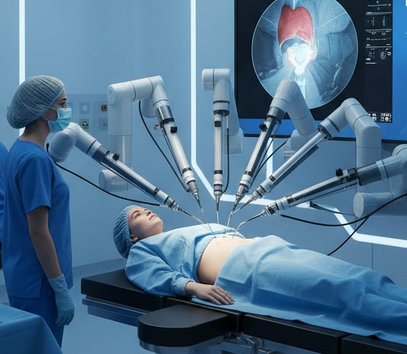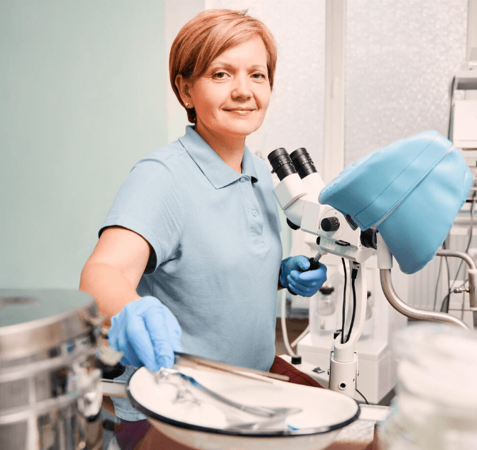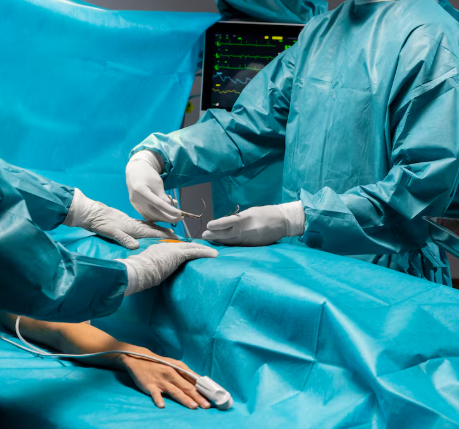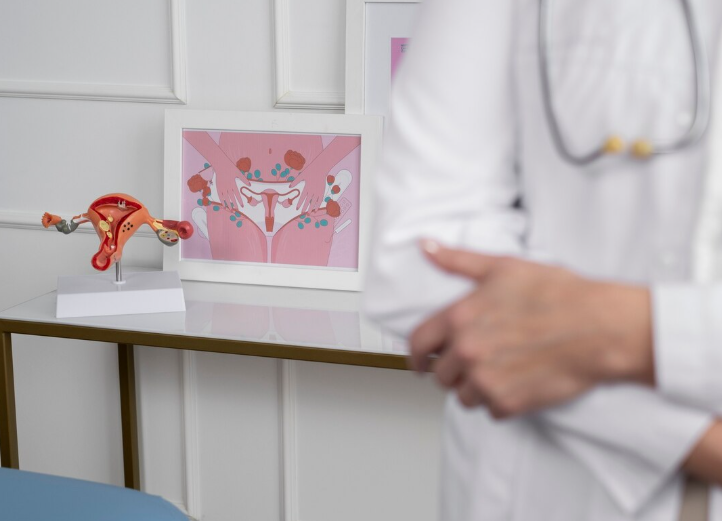Treatment Overview
The Comprehensive Robotic Hysterectomy Program in Korea exemplifies the pinnacle of modern gynecologic surgery, combining robotic precision with Korea’s advanced medical innovation. This cutting-edge procedure involves the removal of the uterus using robotic-assisted laparoscopic systems—most notably the da Vinci® Surgical System—which offers unmatched accuracy, reduced blood loss, and faster recovery compared to traditional or even standard laparoscopic methods. Korean hospitals lead Asia in integrating AI-assisted surgical mapping, 3D visualization, and ultra-fine micro-instruments, allowing surgeons to perform complex hysterectomies through small incisions with maximum safety and minimal discomfort.
Purpose & Benefits
The Robotic Hysterectomy is designed to treat a range of gynecologic conditions while preserving surrounding organs and minimizing recovery time.
Main purposes include:
- Treating uterine fibroids, adenomyosis, endometriosis, or uterine cancer
- Managing chronic pelvic pain or abnormal uterine bleeding
- Providing a safer alternative for patients unsuitable for open surgery
Key benefits:
- Exceptional precision and stability during surgery
- Minimal scarring and reduced post-operative pain
- Shorter hospital stay and faster return to normal life
- Reduced blood loss and lower infection risk
- Enhanced visualization of delicate pelvic structures
Ideal Candidates
This treatment is ideal for women who:
- Have complex uterine conditions such as fibroids, adenomyosis, or endometrial disorders
- Desire a minimally invasive surgical option
- Require high-precision surgery due to prior pelvic operations or adhesions
- Are looking for a quicker recovery and less postoperative discomfort
Patients with good overall health, non-severe cardiovascular conditions, and a uterus size suitable for robotic access are ideal candidates for this procedure.
Possible Risks & Complications
While robotic hysterectomy in Korea has a very high safety profile, all surgeries carry certain risks:
- Minimal bleeding or infection
- Rare injury to nearby organs (bladder, bowel, or ureters)
- Reaction to anesthesia
- Temporary urinary or bowel discomfort
- Rare complications from carbon dioxide insufflation
These risks are significantly mitigated by Korea’s world-class robotic surgeons, whose success rates rank among the highest globally.
Surgical Techniques Used
Korean specialists employ a range of robotic and minimally invasive techniques, including:
- Total Robotic Hysterectomy (TRH): Complete removal of the uterus and cervix using robotic arms.
- Robotic Supracervical Hysterectomy (RSH): Preserves the cervix for pelvic floor support and sexual function.
- Robotic-Assisted Laparoscopic Hysterectomy (RALH): Combines robotic precision with laparoscopic finesse.
- Fluorescence Imaging & AI-Guided Navigation: Ensures accurate dissection, reduced nerve damage, and optimal blood flow monitoring.
- Single-Port Robotic Hysterectomy: Performed through a small incision at the navel, leaving nearly invisible scars.
Recovery & Aftercare
Patients undergoing robotic hysterectomy in Korea benefit from fast-track recovery protocols. Most are discharged within 1–2 days and resume light activity within a week.
Post-surgical care includes:
- Pain control with minimal medication
- Early mobilization to prevent thrombosis
- Regular follow-up imaging and wound care
- Lifestyle counseling for hormonal balance (if ovaries are removed)
Many Korean hospitals also integrate post-operative wellness programs, including nutrition therapy, pelvic physiotherapy, and hormone evaluation, ensuring complete and balanced recovery.
Results & Longevity
Robotic hysterectomy provides long-term symptom relief and improved pelvic health. Conditions like abnormal bleeding, pelvic pain, and pressure symptoms are typically resolved permanently. With Korea’s emphasis on preserving anatomical integrity and functional outcomes, patients enjoy durable results, minimal recurrence of complications, and enhanced quality of life.
Treatment Process in Korea
Korea has established itself as a global leader in robotic hysterectomy, driven by cutting-edge medical technology and precision-oriented surgical protocols.
The process typically includes:
- Comprehensive diagnostic evaluation: Pelvic MRI, ultrasound, and 3D uterine mapping.
- Personalized surgical planning: Use of AI-assisted modeling to simulate and strategize the operation.
- Robotic surgery: Conducted using the da Vinci® system for maximum precision and minimal trauma.
- Recovery & support: Dedicated international patient coordinators, modern inpatient suites, and integrated aftercare programs.
Unique Korean advancements such as real-time fluorescence imaging, AI-driven robotic calibration, and minimally invasive single-port access distinguish Korean centers from other countries. Korea’s focus on medical aesthetics, rapid recovery, and patient-centered hospitality has made it a top destination for robotic gynecologic surgery.
Cost Range
The cost of a Comprehensive Robotic Hysterectomy in Korea generally ranges from USD 8,000 to 15,000, depending on hospital type, surgical complexity, and technology used.
The package usually includes:
- Preoperative diagnostics and anesthesia
- Robotic surgery and surgeon’s fee
- Hospital stay and postoperative care
- Interpreter and international patient services
Despite being technologically advanced, Korea’s pricing remains 40–60% more affordable than equivalent procedures in the U.S. or Europe, while maintaining exceptional clinical outcomes.
Popular Clinics
- Samsung Medical Center (Seoul): Pioneering robotic gynecologic surgery with da Vinci Xi systems.
- Severance Hospital, Yonsei University (Seoul): Known for advanced robotic and fluorescence-guided hysterectomy.
- Asan Medical Center (Seoul): Among Asia’s largest robotic surgery hubs with expert OBGYN teams.
- CHA Gangnam Medical Center: Specializes in fertility-preserving robotic and laparoscopic gynecologic surgeries.
- Ewha Womans University Mokdong Hospital: Offers patient-centered, minimally invasive women’s health programs.




